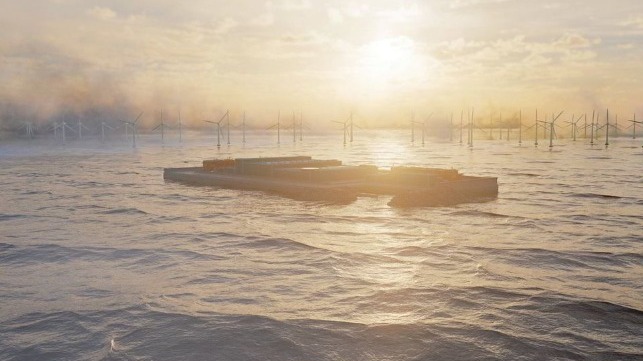Belgium Plans to Build a Man-Made Island for Wind Power Transmission

Belgium is pushing ahead with plans to develop an artificial island off its coast, creating a regional grid connector for offshore wind farms and a future hub for European energy transmission.
Belgian transmission system operator Elia has unveiled the draft plans for what it believes will be the first artificial energy island. (This would put Belgium's development ahead of a well-publicized Danish plan for a man-made energy island off the coast of Jutland.) Elia's installation in the North Sea will benefit from a $100 million subsidy under the Belgium’s post-COVID-19 recovery plan, pending European Commission approval.
The newly-built Princess Elisabeth Island will be located about 45 kilometers off the Belgian coast, and it will serve as the link between the offshore wind farms in a new offshore wind zone and the onshore high-voltage grid. It will also serve as a central hub for new interconnectors with the United Kingdom and Denmark, facilitating the exchange of electricity between countries. This will be the first building block of a European offshore electricity grid.
“Thanks to the very first energy island, new interconnections, three new wind farms in the North Sea and the repowering of the first offshore wind zone, we are transforming the North Sea into one big green power plant. By quadrupling offshore wind capacity by 2040, we will reinforce our energy independence, reduce our energy bills and reduce our CO2 emissions,” said Tinne Van der Straeten, Belgium's Minister for Energy.
According to Elia, the artificial island will occupy an area of approximately five hectares above the waterline and will be constructed from concrete caissons filled with sand. The island will mainly house transmission infrastructure which will be linked to new wind farms under development and will provide a platform for future interconnectors. A small harbor and helicopter pad will provide access for maintenance teams.
Construction of the island is slated to commence in 2024 and should be completed in mid-2026. This will be followed by the construction of the electrical infrastructure. About 300 kilometers of AC cables and 60 kilometers of DC cables will be needed to connect the project to the grid.
The Belgian government is in the process of awarding contracts for future wind farms in the Princess Elisabeth wind zone, which will be linked to the Elia grid.
“The Princess Elisabeth Island constitutes a big leap forward for the energy transition. In addition to bringing 3.5 GW of additional offshore wind energy to shore, the island will also be the first link in a European offshore electricity grid. It will allow us to access the huge offshore wind potential that the North Sea still has to offer us,” said Chris Peeters, Elia Group CEO.
The recent suspected sabotage of the Nord Stream 1 and 2 pipelines has also raised concern about security risks for offshore power transmission infrastructure. To address this new threat, Belgium recently passed a law that significantly strengthens security for critical infrastructures from sabotage and attacks. The measures include the use of video surveillance at sea, drones and tracking of foreign vessels in its waters.
